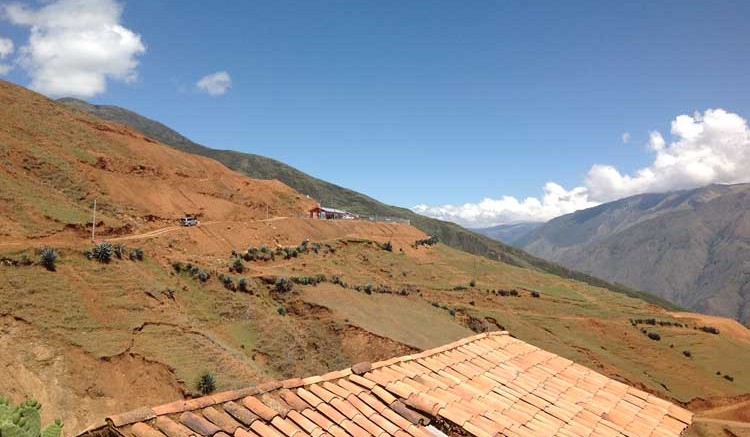While there may be a glut of copper coming out of the world’s mines over the next four years, it won’t be too long before a supply gap opens up and widens.
At least that was the picture painted by Paul Benjamin, a senior analyst at London-based metals and energy research firm Wood Mackenzie, during his talk about copper markets during the “Commodities and market outlook” session at the recent Prospectors & Developers Association of Canada convention in Toronto.
Benjamin started out with a look at last year’s squeezed margins for copper producers of around US70¢ per lb. copper, compared to US$1.63 per lb. in 2010 and US$1.62 per lb. in 2011.
“While 70¢ per lb. is good compared to a decade ago, it’s clear that cost pressure is coming on the copper industry,” Benjamin said.
He noted that there are some signs the cost escalation in existing mines has been brought under control this year, although not completely. The problem is, he said, if you’re looking to make major cost savings, the scope is fairly limited at existing operations.
“So mining companies looking to appease shareholders by saving costs will be targeting exploration and environmental impact assessments, etc., at new projects,” Benjamin said.
In 2012, Wood Mackenzie calculated that over half the cash flow generated by operating copper mines was swallowed up by capital investments in new capacity. The firm estimates that US$26 billion was invested in new copper capacity last year, which comes to around US94¢ per lb. copper produced.
Benjamin said this was caused by two factors: the copper industry has been in catch-up mode in investing in new capacity after under-investment in previous years, and it has also experienced considerable escalation in capital costs.
He noted that Wood Mackenzie had done some analysis on announcements by mining companies in 2012 regarding revisions in capital costs of copper-mining projects, and calculated that capex escalation during 2012 was around 19%, with a peak of 33% in 2007.
“If you compound up all the capex cost rises, it means that the cost of developing a large-scale copper project has risen about fivefold since around 2004,” Benjamin said.
He noted that while rising costs in hard assets such as steel and mining trucks “have contributed somewhat to this dramatic rise, it’s clear that there is something else going on.”
And in Wood Mackenzie’s view, it’s a combination of several factors: the rise of commodity-producing countries’ currencies against the U.S. dollar; the shortage of skilled labour and capacity constraints, such as a lack of EPCM contractors; the cost impacts of “soft” issues, such as community relations and environmental work around existing mines; and increased infrastructure costs.
Despite all this, there are a lot of copper mine projects in the development pipeline, and over the next four years, Benjamin said mine supply would outstrip growth in demand, which means from a fundamental perspective that there will be downward pressure on prices.
“That might well mean companies cutting down on exploration and project-development budgets,” Benjamin said. “And that’s a shame, because after 2017, we see a supply gap opening up again with the demand curve we’ve got, and the reserve depletion that exists in mines. To 2022, we’re looking at 6.3 million tonnes of new mine production capacity required. And so the question is: Where is that going to come from?”
Part of the answer, Benjamin said, is brownfields development, which will be an important source of new production. In terms of capital intensity, he described it as “more cost-effective,” adding that “since more of the infrastructure is in place, the exploration has less risk, and orebodies are to some extent better understood, so the technical risks are lower, and permitting is easier where copper mining is already a significant employer.”
Another factor is that over the next decade, there are a lot of solvent-extraction and electrowinning operations in Chile that are treating the upper portions of copper porphyry deposits that are going to be depleted, so the emphasis will be on developing the underlying sulphides.
Based on historical precedent, Wood Mackenzie reckons, if 70% of the brownfield projects go ahead and contribute 1.9 million tonnes of new capacity, by 2022 that leaves 4.5 million tonnes to come from new greenfields projects.
In terms of the copper price, Benjamin said Wood Mackenzie’s analysis is that US$3.50 per lb. copper “should incentivize sufficient new mine projects to keep the copper market in balance over the next decade.” This is their long-term copper price forecast.
“The risk of that forecast is probably on the upside,” he said, given that the timely development of such troubled major copper projects as Resolution in Arizona and Pebble in Alaska is “highly questionable.”
And so, despite a “glut of projects in construction,” Benjamin ended on a note of relative optimism, saying that the global copper industry is “not likely to have structural oversupply, like in the aluminum industry.”


Be the first to comment on "Copper market deficit in five years"